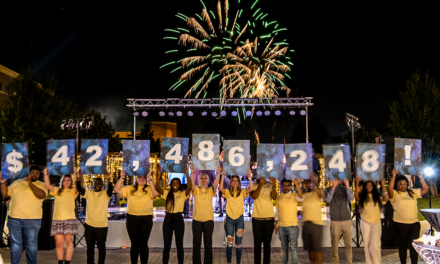By Bill Stokes, Publisher
We all want free and fair elections and maintaining the voter registration list of eligible voters is one way to ensure we can be confident in the results. We asked Sangamon County Clerk, Don Grey what they do to maintain the voter lists. This article outlines how voter registration list maintenance is conducted, focusing on processes used in Sangamon County and across the state.
Initial Voter Registration and Inactivation
When a voter registers in Sangamon County, they receive a non-forwardable Voter ID Card as confirmation. This is a key step to verify the accuracy of the voter’s address. If the card is returned as undeliverable or with a forwarding address outside of the county, the voter is inactivated. At that point, a forwardable Confirmation Letter is sent to notify the voter of the issue and request that they either confirm their address or provide an updated one.
If the voter has moved within the county, the registration record is updated, and a new Voter ID Card is mailed. However, if the voter has moved outside of the county or does not respond to the Confirmation Letter, they are placed on the inactive voter list. Inactive voters remain on the rolls for two federal election cycles before their registration is canceled if no action is taken.
Biennial Showcause Mailing
Every two years, a new non-forwardable Voter ID Card is mailed to every registered voter. If these cards are returned undeliverable, the same process of sending a forwardable Confirmation Letter is initiated. This biannual effort ensures that even long-term voters remain accounted for in the system and their records are kept current.
Illinois Voter Registration System Coordination
One of the key tools in managing voter rolls is the Illinois Voter Registration System (IVRS). This system provides daily updates when a voter in one county registers in another. Upon confirmation that the most recent registration exists in another county, the voter is canceled in the original county. This daily coordination prevents duplicate registrations across counties and ensures that voters are registered in the correct jurisdiction.
Deceased Voters
Each month, the Illinois State Board of Elections receives data from the Illinois Department of Public Health indicating which registered voters have passed away. This information is cross-referenced with county voter rolls, and any confirmed deceased individuals are removed from the voter registration list. This ongoing process ensures that deceased voters do not remain on the active rolls, enhancing the integrity of elections.
Incarcerated Voters
The Illinois Department of Corrections provides weekly updates on individuals who have been convicted and incarcerated. Once this information is matched with the voter rolls and verified, those who are no longer eligible to vote due to incarceration are removed from the list.
Electronic Registration Information Center (ERIC) Participation
Illinois also participates in the Electronic Registration Information Center (ERIC), a nonprofit organization that compares state voter rolls with data from the Secretary of State’s office six times per year. This comparison helps identify voters who may have moved, duplicates, or deceased voters across the state and even across participating states. The cross-state coordination provides another layer of verification to ensure voter registration lists are accurate and up-to-date.
National Change of Address Program
Twice a year, the Illinois State Board of Elections cross-checks voter rolls with the National Change of Address (NCOA) database, which is maintained by the U.S. Postal Service. This check provides valuable information on voters who may have moved, ensuring that their registration information is updated or, if they have left the county, canceled. Voters are also given the opportunity to respond and correct the information if it is inaccurate.
Not Perfect But It’s Reliable
Voter registration list maintenance is a critical aspect of election integrity. By employing a range of verification processes, including the use of returned mail, statewide databases, cross-state coordination through ERIC, and regular updates from public health and corrections records, Sangamon County ensures that its voter rolls are kept accurate and current. These efforts help ensure that every eligible voter’s voice is heard, while safeguarding the system against fraud and error. While not perfect, if these steps are consistantly taken, voter fraud is minimized.




















